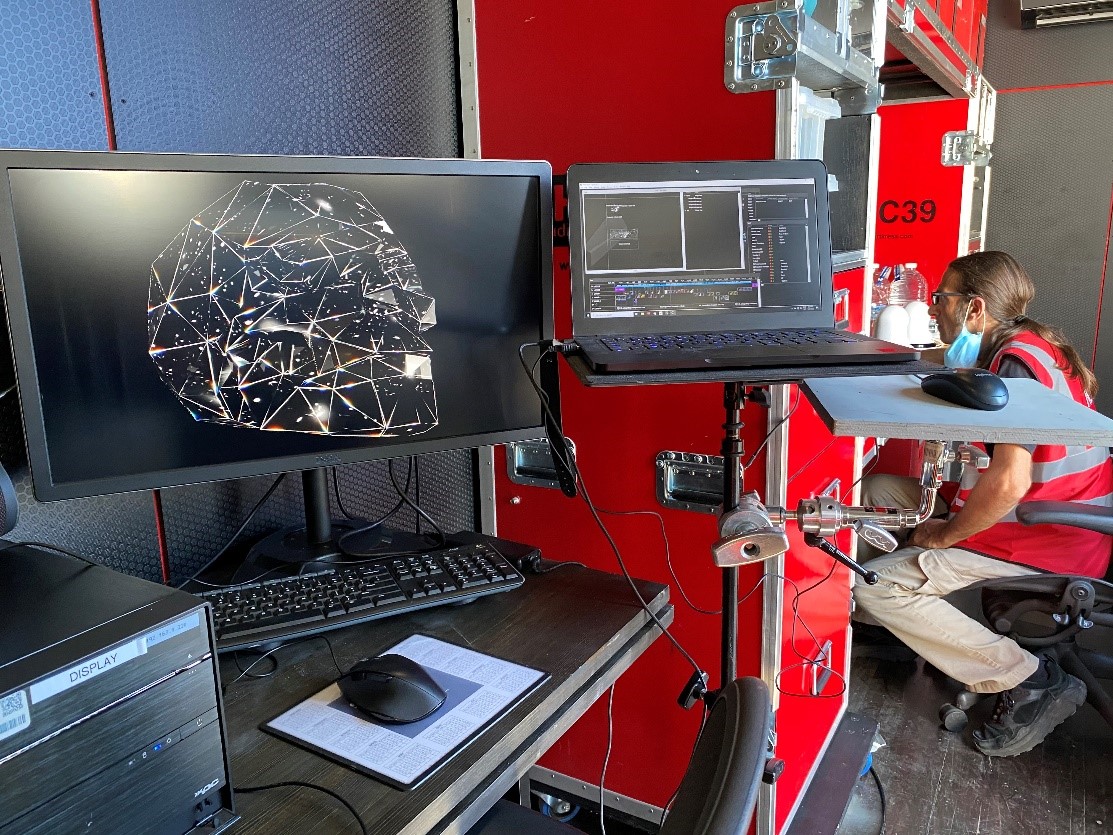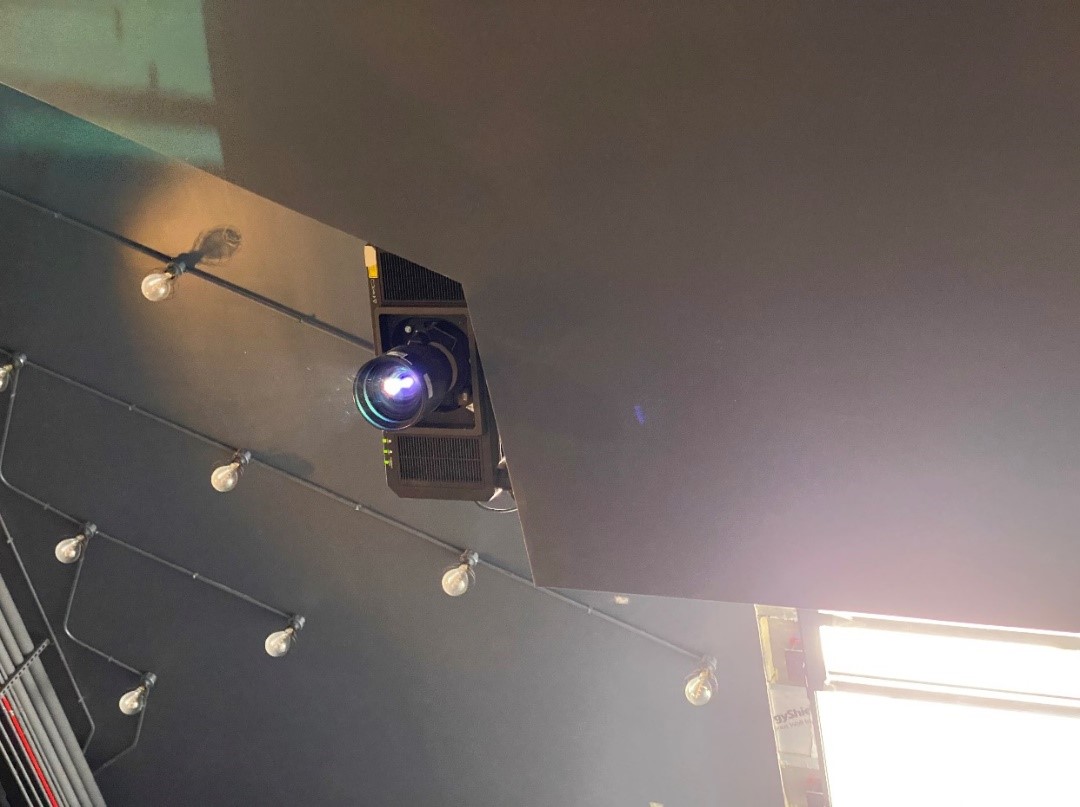October 19, 2020
3 min read
Transporting visitors through a portal and into a newly reimagined visual world, Area 15 weaves together events and entertainment with art, retail, technology and design for a curated, immersive space. The complex is filled with one-of-a-kind art installations, engaging retail activations and inspiring concessions, aimed to create an indoor and outdoor space that is suited for a broad range of events. To set the tone for this space, the entrance to Area 15 features BARTKRESA Studio’s Shogyo Mujo sculpture, a 12-foot skull brought to life by 360-degree projection mapping, heightening the immersive experience and complementing the artistic imagination that encompasses the entire complex.
Livestreaming Shogyo Mujo’s Journey
Selected to be the visual centerpiece upon entry at Area 15, the iconic sculpture had already been anchoring the event complex throughout its construction and with the opening on the horizon, Bart Kresa and his team headed out on a long journey from Los Angeles to Las Vegas in order to move the skull to its new home. With Area 15’s original opening date planned for May 2020, Kresa needed to find a way to safely transport materials and build the sculpture with his team given today’s social distancing requirements and safety precautions. Working with professional video solutions from Panasonic, BARTKRESA Studio chose to livestream Shogyo Mujo’s journey to and installation at Area 15 to demonstrate how immersive visual art installations are still possible as long as the appropriate safety precautions are followed.
Utilizing two AW-HE40S and one AW-UE4 PTZ cameras along with the AV-HLC100 livestreaming video switcher and PTZ controller, BARTKRESA Studio was able to smoothly livestream the team’s journey while simultaneously incorporating interviews with Bart Kresa and guests to discuss the power of projection mapping. Panasonic’s Manager of Live Events, Joe Conover, was onsite during the installation and to speak with Kresa about his thoughts for the future of projection mapping.
Remotely Calibrating 360-Degree Projection Mapping
To minimize physical contact inside the complex once the team arrived, Kresa developed an entirely new application for Panasonic’s PTZ cameras. Using the AW-HE40S and AW-UE4 cameras and the AV-HLC100 as the controller, Kresa remotely calibrated the five Panasonic projectors used to projection map images onto the skull. Equipped with a high-quality camera lens and precise control, the PTZ cameras allowed Kresa to remotely guide and align the projections, enabling him to limit his time within the confined space. The AW-HE40S’s 30x optical zoom and 40x i.zoom capabilities allowed him to capture crisp close-ups to see every detail, while the AW-UE4’s 111° ultra-wide-angle lens gave Kresa a broader view of the space. Because Kresa was able to pan the cameras so easily to capture all facets of the skull, he was able to accurately see what adjustments needed to be made, completing approximately 90% of the required projection mapping calibrations remotely. Plus, the cameras’ NDI capabilities ensured smooth image processing and ease of use throughout this process.

BARTKRESA Studio engineer, Nate Cox, works alongside the dual-monitor setup, which enables the team to see the PTZ camera feed and projection mapping software simultaneously.
For the 360-projection onto Shogyo Mujo, Kresa needed laser projectors with exceptional bright, crisp and clear color. He selected four PT-RZ21KU 3-Chip DLP® SOLID SHINE laser projectors and one PT-RZ970U 1-Chip DLP® fixed installation laser projector from Panasonic for their stunning image quality while ensuring stable, maintenance-free projection. Since the projectors are located 11 feet off the ground, the PTZ cameras ensured that Kresa and his team could avoid using ladders for projector access, adding additional safety to the installation.

Panasonic projector onsite at Area 15
Realizing the Power of AV Technology
While PTZ cameras are used in many scenarios, Kresa was able to apply his creativity with this technology and develop a new approach to projection mapping calibrations. Using Panasonic’s PTZ cameras to complete the Shogyo Mujo installation safely and socially distanced enabled Kresa and his team to demonstrate that immersive visual art is still very possible today. Once Area 15 opens, visitors will see firsthand how the physical and imaginative worlds can collide through projection mapping.
